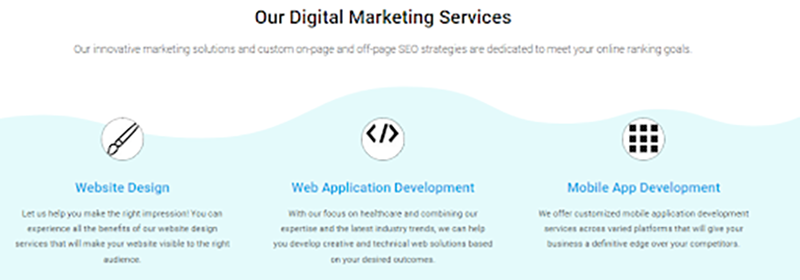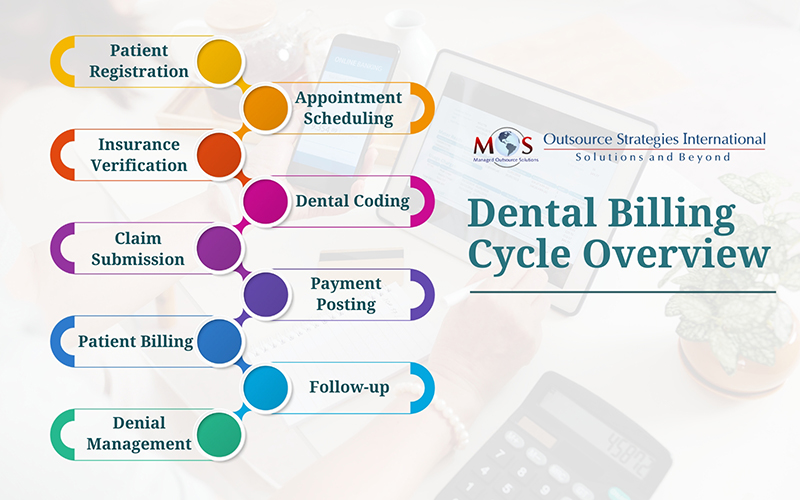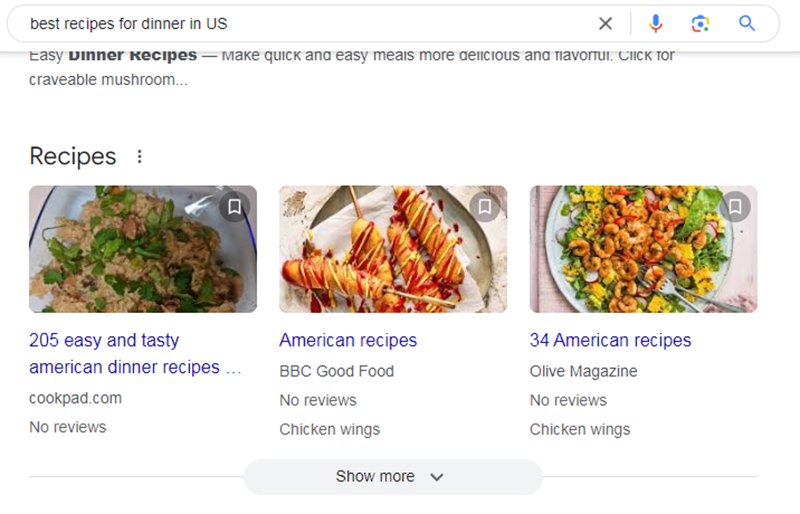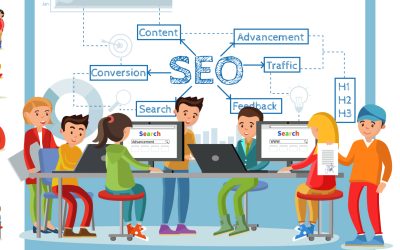Enhancing user experience (UX) of websites is critical today to succeed in engaging and retaining visitors. UX satisfies users and drives meaningful results for businesses. With improvements in UX, websites can effectively meet the varying needs and preferences of the audience, resulting in increased satisfaction and loyalty. With faster navigation, responsive design, and intuitive layout, UX can lead to a positive user journey. It also encourages visitors to explore your content, make purchases, or engage with services.
User experience (UX) design involves creating digital products, like websites and apps that people can use easily and efficiently. It involves knowing what users need, then designing products that meet those needs. While designing a website or even while optimizing content, user experience should be at the forefront of your mind. A professional digital marketing services company will implement good SEO and web design tactics to improve user experience. UX designers use research and testing to ensure the final product is intuitive and satisfying for users.
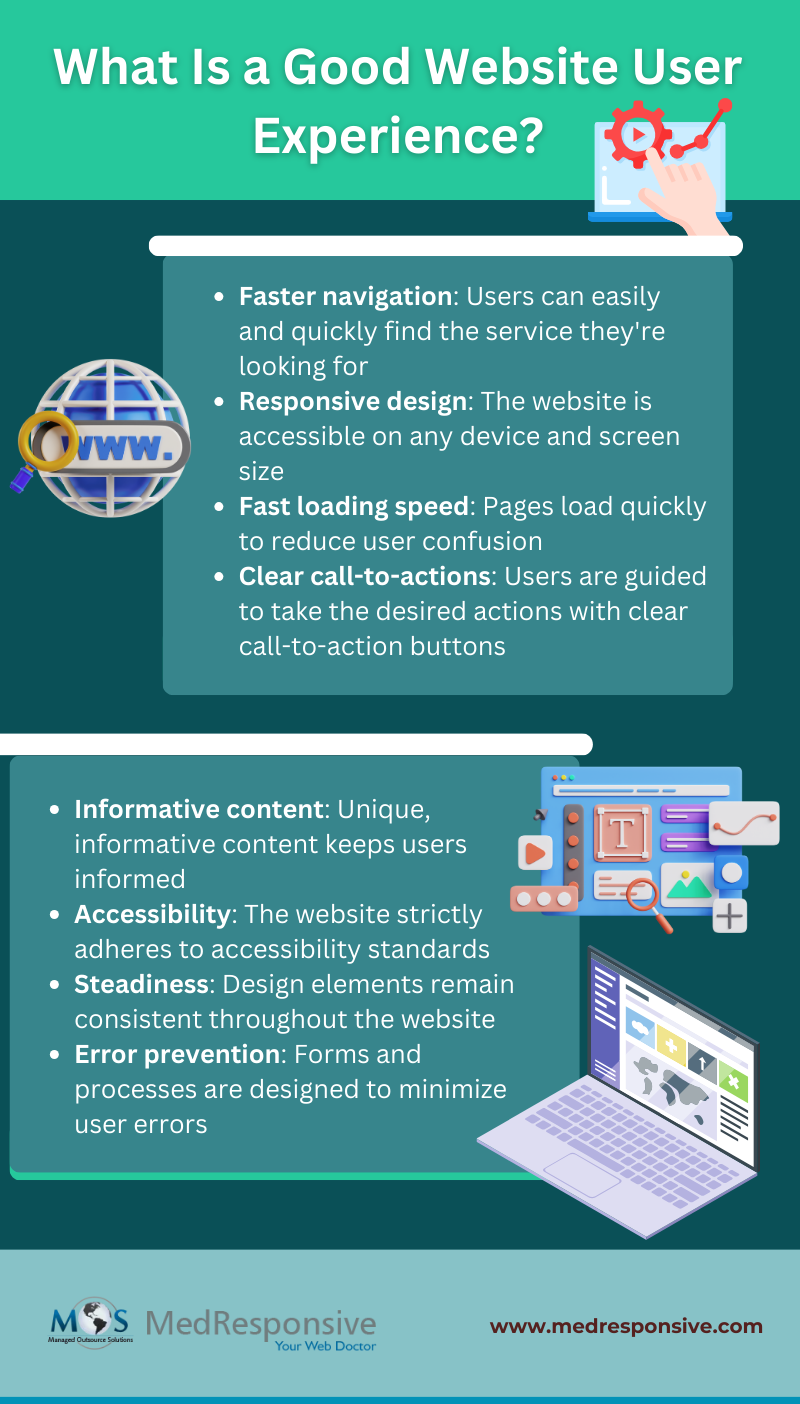
7 Tips to Enhance Your Website’s UX
- Keep your design simple
Go for a clean layout with limited color themes, a standard logo, unique content and clear fonts to make it easier for visitors to find exactly what they’re looking for. Avoid stuffing pages with heavy graphics or images that can distract users. Instead, focus on usability and readability. Ensure that each feature of your website contributes to a smooth browsing experience. Simplicity is maintaining the right balance between the site’s functionality and aesthetics to create a website that truly meets your audience’s needs.
- Increase page loading speed
Readers expect your web pages to load faster, especially with the increase in mobile usage. Pages that load in 1 to 2 seconds have higher conversion rates than those that take long to load. If your page is loading, it is more likely that people will leave your site. Faster loading of website can enhance user experience, reduce bounce rates and optimize search engine rankings.To increase page loading speed,
- reduce file sizes by optimizing videos and images
- combine and compress CSS and JavaScript files to minimize HTTP requests
- store frequently accessed resources by enabling browser caching
- distribute content across multiple servers using content delivery networks (CDNs)
Use free web tools like GTMetrics, Pingdom, or Google PageSpeed Insights to track speed and get useful information on how to improve your website’s load speed.
- Use more white space
Using more white space is an effective way to improve your website’s UX design. White space is the space between text, graphics, images, and blocks. It allows your designs to breathe and adds to the simplicity of your website.
- Write unique content
Content diversity and uniqueness matters. Create a wide range of content formats including video and audio content along with text content to create a better experience for everyone who visits your website. Apart from the existing norms, do your research about your users and explore visual trends like text to image that adds value to your content.
Image SourceInclude interesting posters or infographics to pinpoint the key points in your content.
- Add attractive visual elements
Images play a significant role in attracting the users’ attention, and conveying messages very well.
Compared to generic images that may not succeed well in connecting with users, original images can make a long-lasting impression among the audience. The right images can also boost conversion rates to a great extent. Authentic images can promote a stronger bond and enhance overall engagement. Never use large images without optimizing the file size. Such files will increase the website load time.
- Correct all broken links on your sitePages that are not accessible and broken links can leave a negative impression on your audience. This could impact your website’s traffic. Poor quality links can also compromise the website’s reliability and professionalism. Make sure to identify and correct broken links to prevent visitor’s frustration and confusion. Regularly audit and repair broken links, as it can boost your search engine optimization (SEO) efforts.
- Include attractive call-to-action buttons
Image SourceAdd attractive call-to-action buttons with the right action words to prompt readers to take quick action to benefit from your services, make a purchase, subscribe to a newsletter, or explore more content. CTAs with compelling language and attractive visuals can easily capture attention and motivate users to take the next step.
Combine professional SEO services with user experience for optimizing the user journey. Make sure to strike a balance between the digital marketing strategies you implement and building meaningful relationships to enhance overall brand value.
Let our digital marketing services company boost your brand’s online performance.
Contact us for a consultation today!


